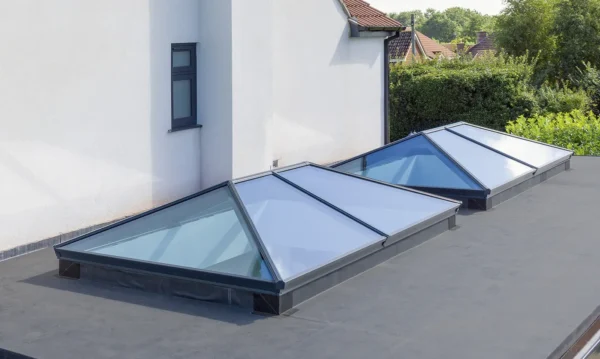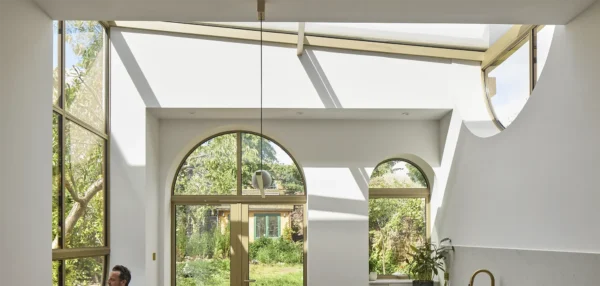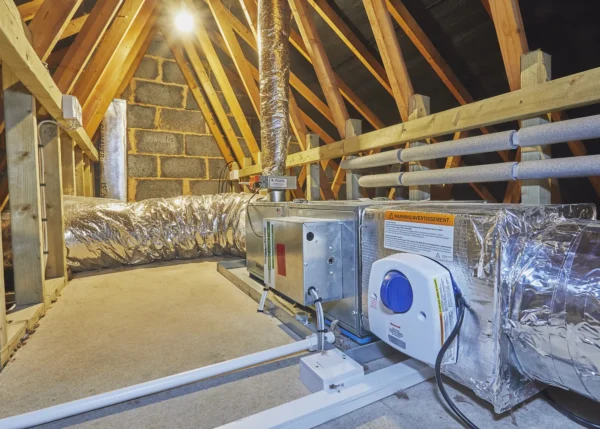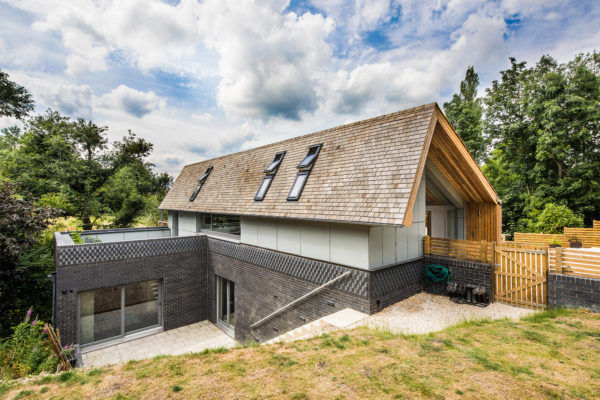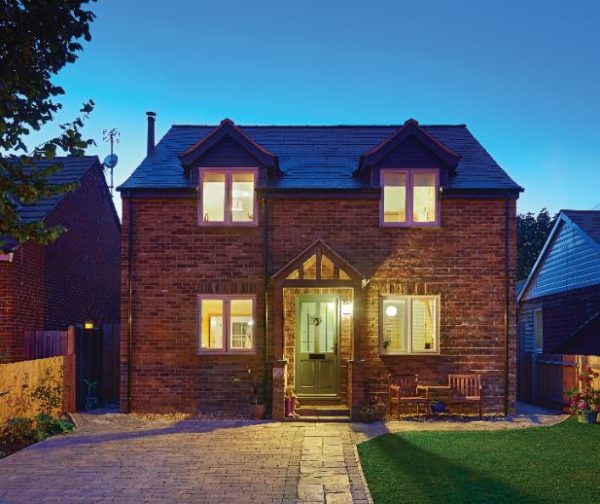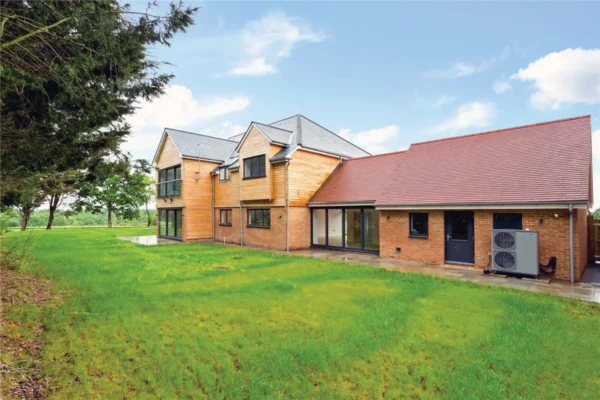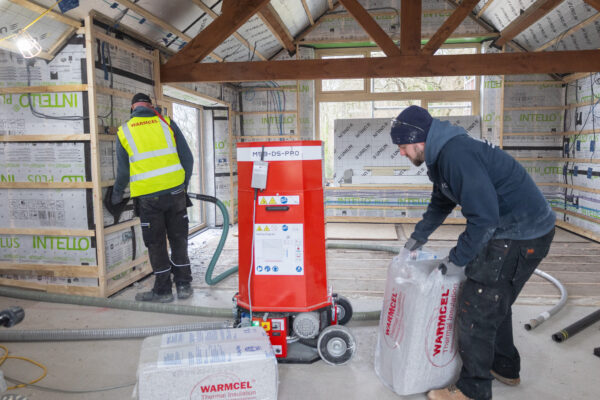How Sustainable is Timber Frame?
Self builders have been at the front of the green homes charge for decades. Understandably, a lot of focus has been put on systems and materials that contribute to creating a low-energy, low-bills living environment, with minimal carbon emissions over the lifespan of the house. But there’s a growing focus on other facets of the sustainability equation, too.
“To some people, energy saving is enough and that’s what sustainability is all about,” says Neil Sutherland, architect and director at MAKAR. “But describing a product as ‘eco’ for its energy-saving properties alone is not acceptable in 2021. It’s important to look to additional criteria as we move towards net zero, including embodied and operational energy/carbon.”
So, there’s a balance to strike, and many people are now looking at upfront environmental impact in terms of how goods are produced, transported and maintained. A comprehensive eco building strategy will also consider occupant health, encouraging the use of natural, replenishable and non-toxic materials over finite fossil-fuel derived resources.
If you’re looking for a structural system that ticks a lot of those boxes, the good news is that modern closed panel timber frame can do just that. But simply settling on a structural route with burnishing green credentials doesn’t mean you should rest on your laurels and tick sustainability off your wish list.
Learn more: 6 Construction Systems for Your Self Build
You need to do your research to determine whetherthe exact system you’ve got your eye on can meet your eco project goals. So let’s take a closer look at where closed panel solutions deliver, what aspects you might want to scrutinise, and how some suppliers are taking sustainability to the next level.
Sustainability pros
There are a number of key areas that enable closed panel timber frame to excel when it comes to creating an eco-friendly home (in every sense). The headliners include: Low energy, low emissions: This factory-engineered solution offers excellent thermal performance out of the box, which paves the way for lower emissions over the entire lifetime of the house.
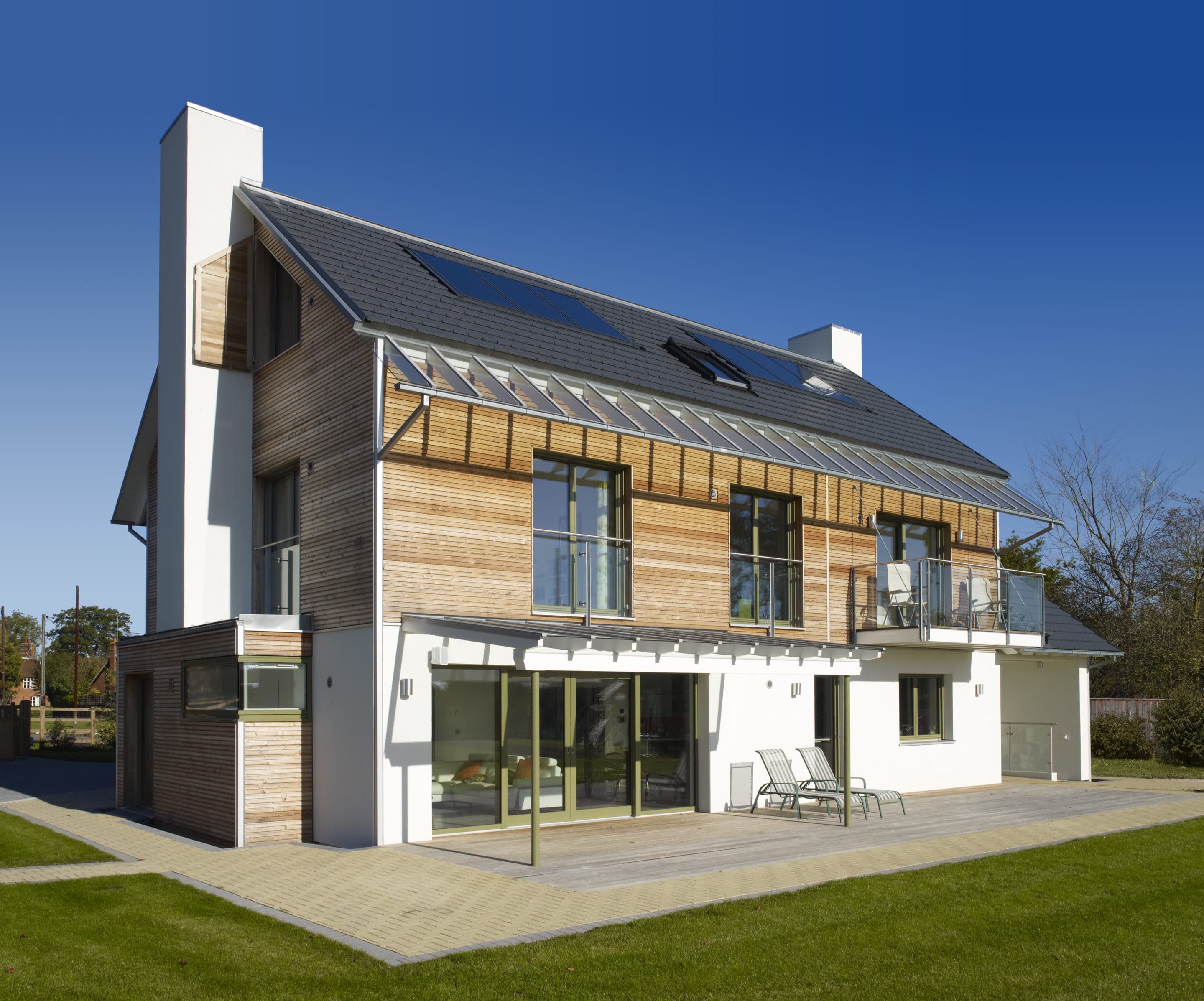
Building a healthy house was a top priority for the owners of this country property, who suffer from hayfever and asthma. The impressive eco credentials of a Baufritz build led them down the closed-panel timber frame route, resulting in this contemporary project.
“The insulation is pre-fitted into the structural panels, which have been designed to deliver excellent thermal and airtightness properties,” explains Simon Orrells, managing director at Frame Technologies. “Closed panel solutions can achieve U-values (a measure of heat loss, where lower numbers indicate superior thermal performance) from 0.25 W/m2K right down to 0.09 W/m2K. Essentially, they are built to guaranteed high standards of thermal insulation.”
Less waste: Manufacturing a closed panel structural shell is usually a fully computer-controlled process. Your home’s design information is fed into the system, which then produces an exact cutting list designed to maximise material efficiency and minimise wastage. This high degree of factory precision enhances timber frame’s sustainability credentials, with follow-on benefits in terms of reducing time and labour requirement on site. Any offcuts that are created within the factory environment can be reused or recycled on site (in some cases, it may even provide renewable fuel for biomass heating at the plant).
Certified supply chain: Modern timber frames are built with wood harvested from renewable sources, independently accredited by the Forestry Stewardship Council (FSC). This means you can rest assured a large proportion of the materials you’re using in your home’s superstructure come with sustainability built-in.
The FSC sets clear standards for replanting, conserving native ecosystems and for the tracing and verification of timber throughout the supply chain. So don’t be shy about asking the companies you’re working with to provide documentation that backs up their sustainability claims.
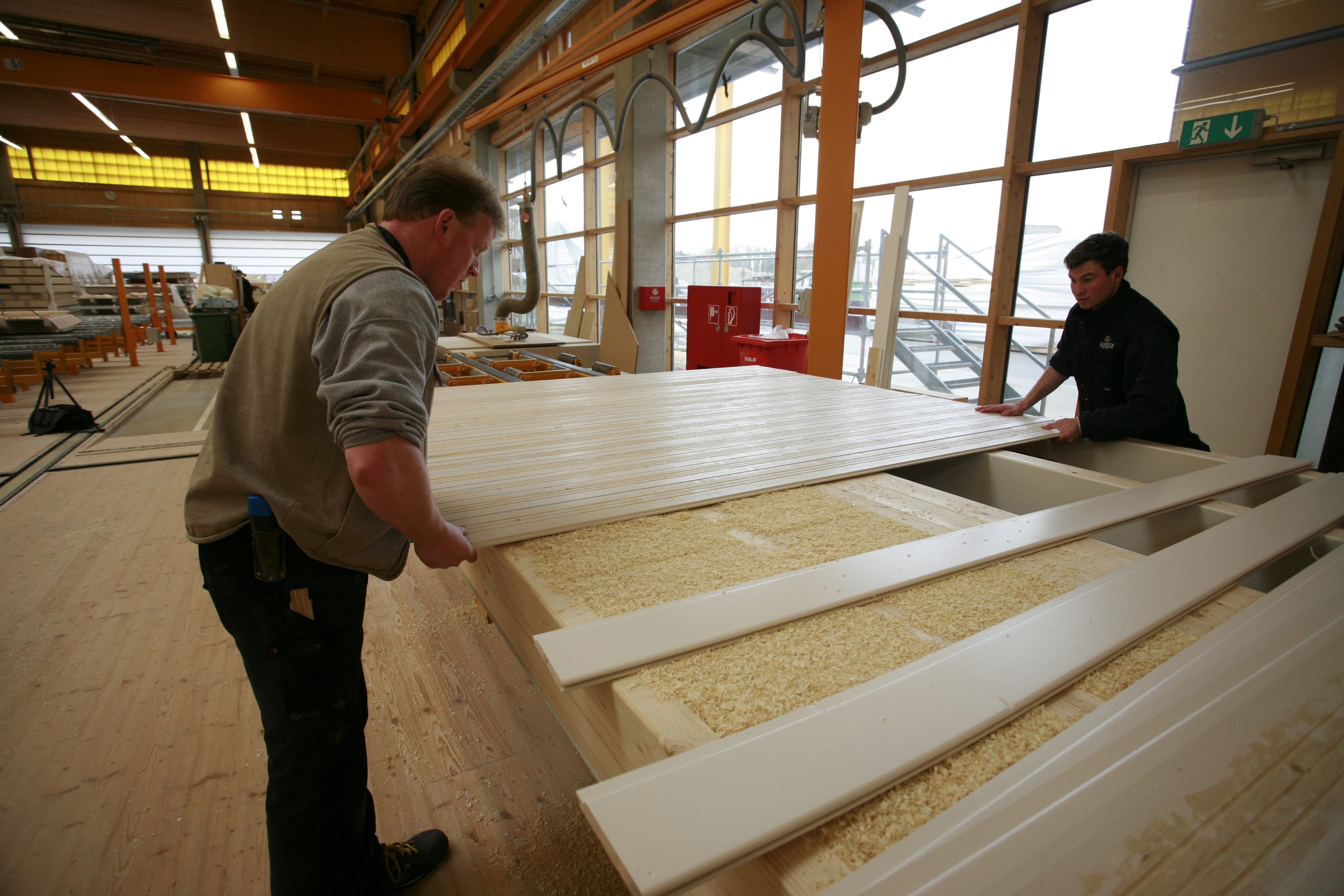
Baufritz uses a patented wood fibre insulation called HOIZ within its closed panel timber frame system. This insulation comes with Cradle to Cradle Platinum and Gold certifications, which recognise sustainable products made or the circular economy
“One benefit of using a closed panel solution from a Structural Timber Association (STA) member is that, if you brief your supplier, they can source information on the supply chain for you,” says Simon Orrells, managing director at Frame Technologies.
“Every manufacturer uses different providers, but with timber frame, you have a more balanced regular supply chain that must be able to evidence the source of its materials. It’s part of the STA’s quality management system that we are required to provide this evidence. It can be difficult to get this level of certainty with other build methods, as you are often sourcing goods from lots of different places.”
What to ask about
The above factors make closed panel timber frame an attractive choice for eco conscious self builders. But if you want to take that a stage further, you’ll need to work closely with your supplier to ensure that every detail is specified with sustainability in mind. A lot of this comes down to the exact nature of the products being used.
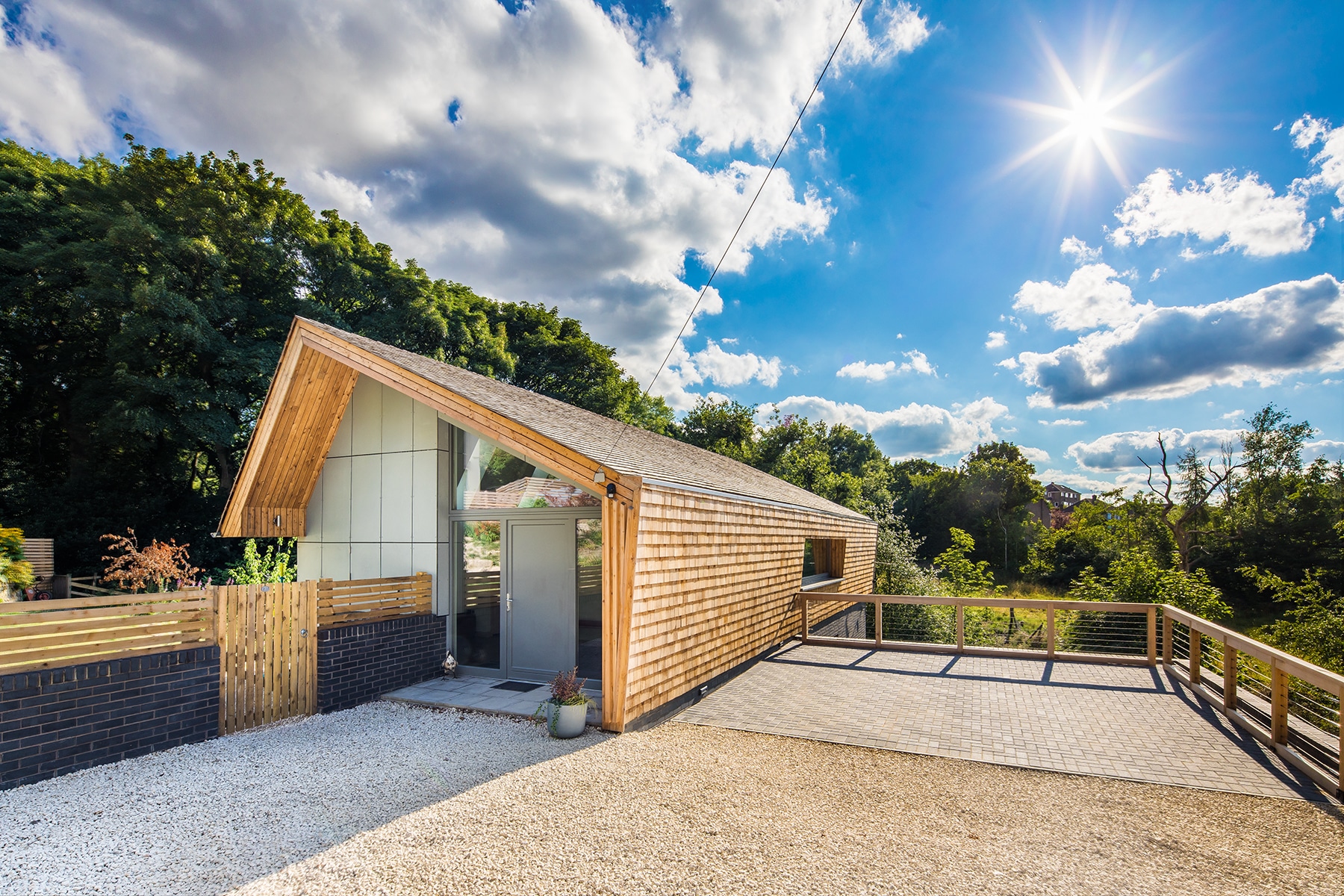
Frame Technologies designed, manufactured and assembled the timber building components for this contemporary eco home. Using a lightweight structural system has minimised the amount of material required for the foundations – a knock-on benefit of timber frame.
Material makeup: New homes are built to exacting standards for airtightness, which offers major benefits for energy efficiency. But over a long period of time, living within a tightly sealed thermal envelope has the potential to increase occupants’ exposure to low levels of off-gassing toxins contained in certain products and finishes.
Learn more: Frame Technologies
A number of modern construction products contain volatile organic compounds (VOCs) like formaldehyde.
On the timber side, common culprits include sheet materials like OSB (oriented strandboard) and MDF (medium density fibreboard). The issue is by no means confined to timber, however: VOCs are also contained in many other building materials, such as plasterboard.
There’s an argument much of this will be locked up in the structural fabric; but some prefer to take a belt-and-braces approach. “We try to avoid materials that off-gas, so you don’t get any VOC build-up within your home,” says Jasper Meade, director at PYC. “There’s no added formaldehyde in our boards, so you’re going to be living in a healthy atmosphere. If you consider that the panels will be present for the entire lifetime of the house – let’s say 100 years – it’s an important factor to bear in mind.”
It’s fair to say that this area is an aspect of sustainability more and more manufacturers are addressing. “Material suppliers are working hard to remove formaldehyde and many timber framers are using formaldehyde-free OSB, so it is definitely moving forward,” says Simon.
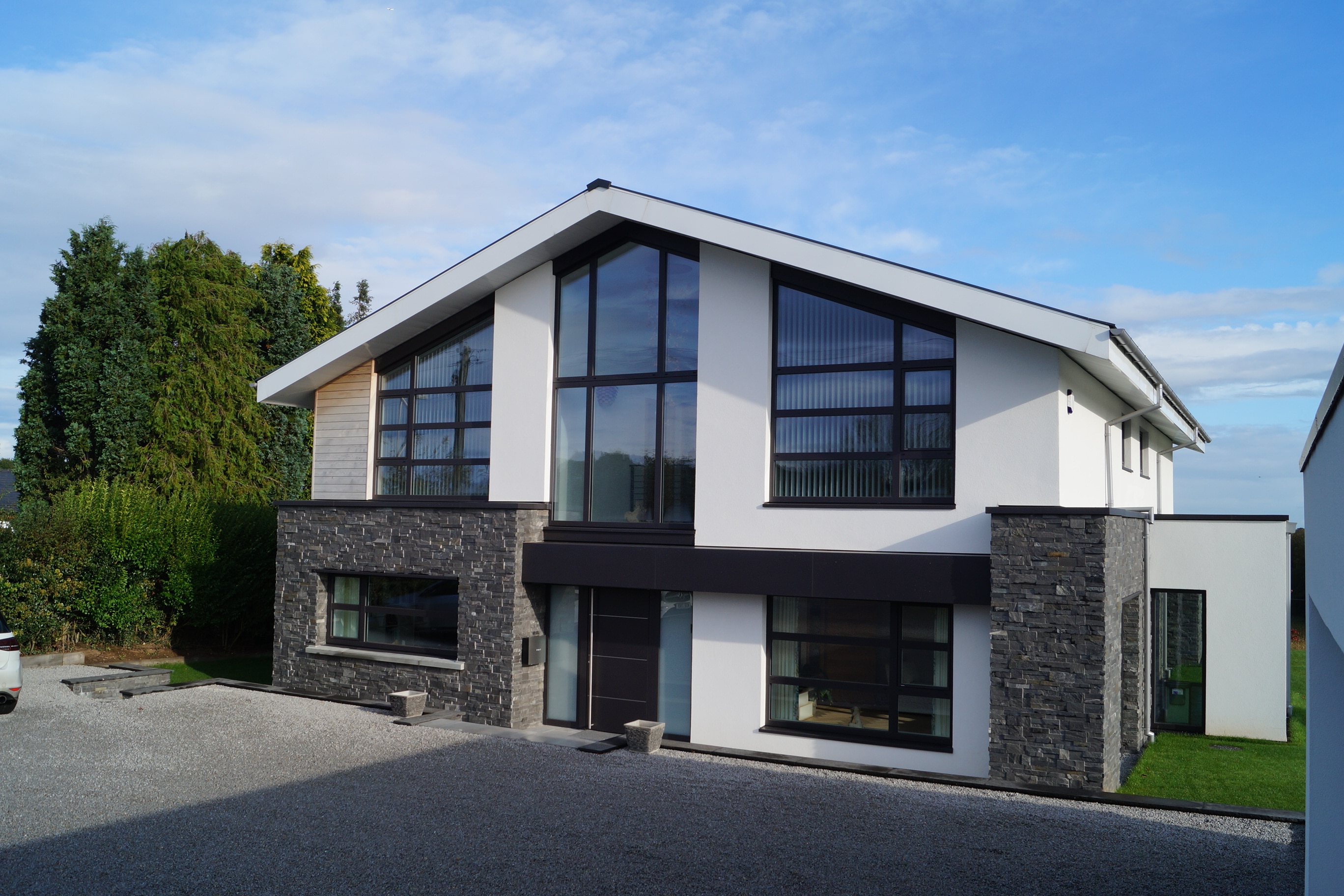
This passive standard home was erected by MBC Timber Frame. A thermally efficient render system from Alumasc is complemented by natural exterior finishes, including Western Red Cedar cladding and charcoal slate facing
Insulation options: Another element to investigate is the insulation material (is it renewable, or produced from a finite resource?). Plastic products such as phenolic foam insulation, for example, offer an impressive thermal performance to panel thickness ratio. So they’re great for cutting emissions in use, and offer the potential to gain extra floor space without losing energy efficiency. But some question the relatively carbon-intensive production process, and the fact it’s made from a toxic petrochemical derivative (phenol-formaldehyde).
And while they have the potential to be reused, plastic insulation boards can’t currently be easily recycled. “Deconstruction, reuse and zero-waste are going to become increasingly important going forward. Timber and natural fibre products lock up carbon (unlike plastic),” says Neil.
Moisture management is another aspect to think about. Certain plastic insulations are impervious to moisture, which can have benefits in some situations. Opting for natural products allows the building fabric to be breathable, however, so you aren’t relying as heavily on mechanical ventilation systems to maintain air quality inside the house.
Many suppliers now offer the opportunity for natural insulations – such as sheep’s wool, hemp or cellulose – within their timber frame systems. For example, PYC uses Warmcel (cellulose fibre made from recycled paper).
“The newspaper is partially sourced from kerbside collection, but mostly from material returned to the printers,” explains Jasper. “Warmcel includes naturally-occurring boron and Epsom salts to prevent it from burning, to keep insects out and to stop mould growth.”
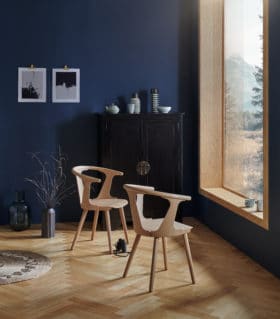
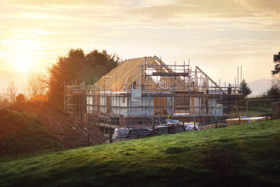






























































































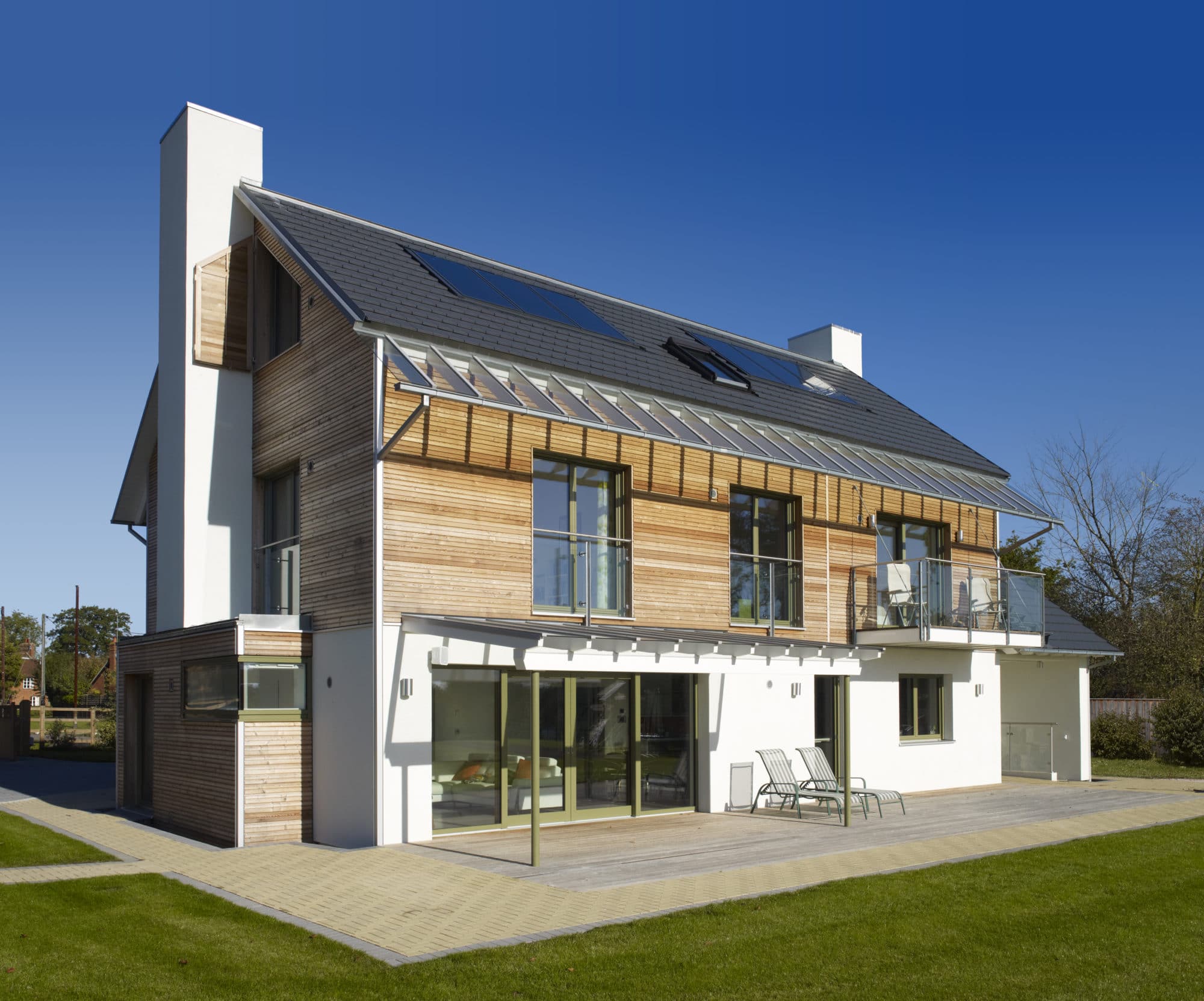
 Login/register to save Article for later
Login/register to save Article for later

